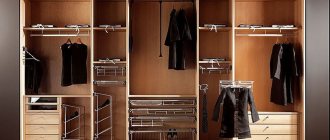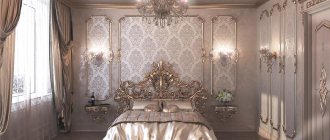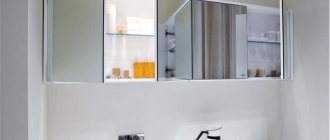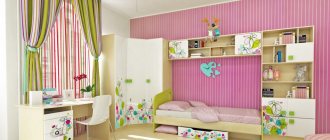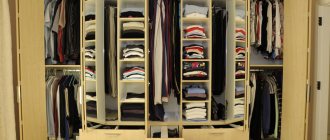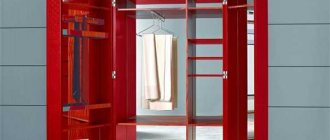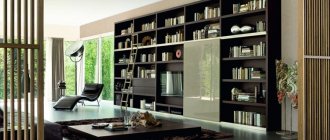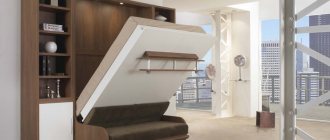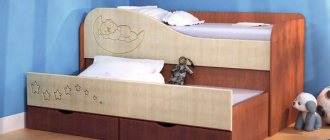There are many different types of interior items that are movable. Special wheels for furniture are mounted for them, ensuring ease of movement of structures. They differ in the method of fastening, the possibility of adjustment and other numerous parameters. Therefore, you should carefully select wheels for different furniture so that they are of high quality, attractive and made in a style suitable for a particular furniture and interior. In the process of choosing any piece of furniture that is movable, you should definitely evaluate furniture wheels and casters so as not to make a mistake with the right choice.
Options for choosing comfortable wheels for chairs
Before delving into the question of practicality and the composition of the rollers on the chairs, you need to decide what such a part is responsible for and what functions it performs. Wheels are needed for:
- ensuring smooth movement of even the most massive leather chair on linoleum, carpet or parquet;
- uniform distribution of weight load on the chair structure;
- ensuring the transportability of the product from one place to another;
- practicality of using the chair.
A comfortable soft or anatomical mesh chair cannot be practical to use without properly selected casters. Wheels are a guarantee of smooth movement and movement of fairly voluminous furniture for your home or office.
The rollers can be fixed or rotary. Only swivel mechanisms are used for the seats.
This is interesting: Characteristics of beech furniture panels, main advantages
How to choose wheels for furniture
To independently select casters for any piece of furniture, it is recommended to consider:
- design features of fittings;
- material for making wheels;
- technical specifications.
Types of furniture wheels
Rollers for drawers or other furniture can be classified according to the following criteria:
- designs. There are:
- swivel wheels, which are easy to maneuver, even in small spaces. Mainly used for installation on pieces of furniture that move quite often (chairs, armchairs, coffee table, etc.);
Rotating wheels
Swivel rollers can rotate in one (straight-flank wheels) or several planes.
- fixed rollers. The fittings have a large margin of safety, are able to withstand significant loads, but are less maneuverable. Fixed furniture wheels are installed on sofas, cabinets, chests of drawers and other furniture that is moved extremely rarely. Fittings with a non-rotating system can consist of a single or double roller, which allows you to increase the level of load on one furniture wheel;
Wheels without rotation
- configuration. Rollers can be equipped with:
- ball bearings, characterized by greater strength and durability;
- sliding bearings. To increase the service life, constant lubrication with high-quality materials is required;
Types of roller bearings
- additional functionality. Casters for wardrobes, chairs or other furniture can be additionally equipped with a stopper, which allows you to fix a certain position of the furniture. Wheels with a brake (stopper) are used for safety purposes when living together with small children or pets.
Furniture wheel with locking function
Manufacturing materials
Rotating swivel or fixed wheels can be made of materials such as:
- metal (steel, zinc, aluminum, cast iron, etc.). Metal wheels are durable and can withstand significant loads, but unpleasant sounds may occur during use;
- plastic. Plastic wheels are less durable, but more convenient to use. The fittings operate smoothly, do not make any extraneous noise, and do not leave imprints on the floor covering;
Plastic furniture wheel
- thermoplastic rubber. Rollers made from this material are durable and easy to use, but are expensive;
- acrylic. The material is also expensive, does not leave marks on the surface, but, unlike rubber, is not intended for heavy loads.
The most popular are metal rollers with rubberized winding. This combination allows you to achieve maximum strength, the ability to withstand significant loads and ease of use: no noise when moving, no marks on the floor, and so on.
Metal rubberized wheel
Determination of technical parameters
To choose the right roll-out caster for a sofa, a wheel for an office chair, a sliding wardrobe or a coffee table, it is important to take into account not only the type of fittings and its design features, but also parameters such as:
- dimensions;
- maximum load.
All furniture wheel supports vary in height and wheel diameter. Rollers are produced with a diameter of 30 – 100 mm and a height of 35 mm. The most popular supports are those with a diameter of 50 mm.
Dimensions of furniture casters
When choosing furniture roller supports, it is also important to take into account the maximum permissible load level, which is determined according to the following scheme:
- The weight of the furniture for which the rollers are intended is determined. The parameter can be found in the accompanying documentation;
- the planned load on the furniture is calculated (weight of linen, interior items, etc.);
- a reserve of 2–3 kilograms is added;
- the planned load, taking into account the stock and weight of the furniture, is summed up and distributed by the number of wheels.
For example, you need to determine the load on a wheel intended for a shelf weighing 5 kg. It is planned that the shelves will contain decorative items with a total weight of no more than 7 kg. Taking into account the recommended reserve, the maximum load will be determined as 5+7+3 = 15 kg.
The shelf is equipped with 4 rollers. This means that you need to select supports with a load level of 15/4 = 3.75 (4 kg).
All parameters of furniture wheels are indicated in the attached technical documentation.
Technical parameters of rollers
Criterias of choice
Rollers for a pull-out sofa should, first of all, be as reliable and of high quality as possible. Otherwise, they will often fail, after which they will have to be immediately replaced with new ones. When choosing casters for a sofa, you should pay attention to the following characteristics of the fittings:
• load capacity – not only the weight of the retractable part of the sofa frame is taken into account, but also the expected load on it while sitting or lying down; • roller diameter or wheel support height; • aesthetics – the rollers are not particularly visible under the sofa, so you can opt for the classic black version.
Another important criterion for choosing a roll-out caster for a sofa is the type of fastener that secures it to the frame. It can be platform or bolt-on. But usually the rollers are fixed using screws or nails.
It’s very easy to buy a roll-out roller for a sofa in our online store. Our managers will always come to the rescue if you cannot make a choice and will select the best fitting option specifically for your furniture. We guarantee high quality of the videos presented in the catalog. Delivery of the order is possible by any transport company or even by courier, directly to the specified address.
Sofa casters or furniture wheels play an important role in the ease of unfolding of any home furnishing item. Failure occurs suddenly or gradually. The rollers come with a plastic wheel or a rubber one (plastic inside + rubber outside). The latter version of the wheel is more durable and reliable. Also, rubber-plastic rollers are excellent for laminate and parquet, because... They make almost no noise and leave no traces. There are several dozen options, but the most common ones are presented below. We can purchase them from 1 piece for replacement yourself, or call our specialist to repair your sofa.
Don't waste your time!
Installation and repair of mechanisms.
We will identify your mechanism from the photo.
Delivery throughout RUSSIA from 2 days.
Viber/WhatsApp/Telegtam
What types of wheels are there for office chairs?
You can determine the quality of the roller seat system yourself directly in the store. But to do this, you need to navigate the question of what is better for such furniture - rubber with a smooth ride or plastic with a lightweight design?
Plastic
The most budget and most economical option is plastic. Such parts have one advantage - low price, and a number of negative characteristics:
- instability due to the lightness of the wheels themselves. Both a child weighing 10 kg and an adult can roll over in a chair;
- absence of the necessary friction, which is very inconvenient when moving on linoleum or parquet - the chair will rather slide along the surface, and the wheels will not scroll;
- when using plastic, you need to be prepared for the fact that scratches and worn-out parts will be visible on the floor surface - rails along the most “knurled” route;
- lack of maneuverability;
- lack of flexibility of movement, which is especially noticeable when moving the chair from an elevated surface to a lower one, and vice versa. If the rubberized wheels adapt to the characteristics of the floors, then the plastic ones will simply slide off and the chair will fall when overcoming any obstacles.
Most often, manufacturers use plastic wheelbases for children's models. But parents must understand that the safety of their child comes first.
Rubber
By itself, rubber is more practical than plastic, but less effective than polyamide or silicone. It is important to note that in the production of wheels for furniture, in particular for office chairs, rubber is not used in its pure form, but its improved version on a polyamide basis. Pure rubber without impurities and additives - a sticky consistency that leaves a black or gray mark behind, is not abrasion resistant, and is less elastic. The positive features of such a base are easy, smooth movement, ease of movement and stability of the product. But there are also plenty of negative characteristics:
- a mark remains on parquet, linoleum, tiles;
- not long service life;
- loss of attractiveness during use, the wheels look dirty and are difficult to wash.
The best option is polyamide with a rubberized layer.
Polyurethane
Polyurethane is a synthetic polymer whose characteristics are several times better than the most durable rubber. Indicators of elasticity, strength and wear resistance have been increased. Not the entire wheel is made of polyurethane, but only the tire in contact with the floor surface. As a rule, cast iron or nylon is used as the main load rim.
Advantages of polyurethane wheels
- Long service life.
- Work on rough surfaces.
- Do not slip on glossy floors (for example, tiles).
- High tear resistance.
- Do not come into contact with water, salts or ammonia.
- High resistance to oils, alcohols, petroleum products.
- They do not lose quality at temperatures from - 40ºС to + 60ºС.
- They are easy to clean and do not become dirty over time.
Polyurethane wheels cannot be treated with organic or inorganic solvents or sulfuric acid.
Polyamide
Nylon or otherwise polyamide wheels are made by high pressure casting. For this reason, the base is considered solid, increasing the shelf life of the rollers and the uniformity of the structure. More often in Ukraine, such wheels are used for hydraulic carts, less often - as wheels for chairs.
The main difference and also the advantage of polyamide from polyurethane is abrasion resistance, an almost indefinite service life and excellent visual qualities - they do not get dirty and scratches and abrasions are not visible on their surface.
Advantages
- Maximum resistance to aggressive environments (except sulfuric acid).
- Easy to clean.
- Ability to withstand loads up to 400 kg.
- They adapt to differences in the structure of the driveway surface: they can be driven on both soft carpet and glossy tiles.
- Low coefficient of friction, which allows use without bearings.
- Possibility of operation at temperatures from - 40ºС to + 80ºС.
Often, polyurethane wheels are more expensive. But this does not mean that they are better than polyamide ones - they are simply different in scope.
Which chair should I buy so that the wheels don't fall off?
After we have figured out the main differences between wheels for furniture or chairs, a reasonable question arises: what are the best chairs to buy so that they simply do not fall apart over time during use? Definitely, you should not buy chairs (no matter for a child or an adult) made of plastic. You can distinguish such a base by tapping the wheels with your fingers: a dull sound like emptiness - this is plastic that will not last more than a few months.
The Barsky company, even in its simplest, basic models of chairs, uses high-strength nylon wheels, which have not been changed during the entire period of sales and sales of the product due to breakdown.
Polyurethane wheels are suitable for those who do not plan to use the chair often and with variable floor structure. For example, if you are buying a chair for a child for his nursery, where he will occasionally watch the computer and not rock on the chair from room to room, from carpet to parquet, then you can get by with polyurethane casters.
If the goal is to buy a high-quality universal chair for work and one that would be suitable for all family members, it is better to look towards polyamide nylon wheels. This is not to say that both of these options are better or worse than each other, they are simply of higher quality than plastic and are used in different areas.
Buying a chair is a responsible mission, regardless of who chooses the furniture - for a child or for the office at work. Don’t think that your child will get by with a simpler option; remember, his health is at stake. Rubber-coated wheels or nylon rims are the best option for office or home use, as Barsky’s professional practice shows.
What is it made from?
Wheel supports are made from different materials. The durability of the fittings and its price depend on this.
The most popular:
- plastic;
- rubberized.
Plastic products are placed on oversized objects that cannot bear heavy loads. The rotating element in them is usually made of the same material. Plastic wheels are inexpensive and are installed on budget headsets.
But rubberized products have a metal body and a rod. It can be made from aluminum, cast iron, and various alloys. Rubberized wheels on furniture are indispensable for rooms with expensive flooring - stone, natural wood, and so on. They do not scratch the surface or leave dark marks or streaks on it, and the furniture itself moves almost silently.
When choosing, you need to focus not only on the type of flooring and the cost of the products, but also on the potential load.
This is interesting: Purpose of furniture legs, classification of fittings
Mounting methods
How to attach wheels to furniture? Support rollers can be fixed in the following ways:
- screw. A threaded rod is screwed into the prepared base or furniture leg. This type of fastening is considered the simplest. To achieve the maximum level of fixation reliability, it is necessary to clearly select the height and diameter of the mounting screw according to the same parameters of the mounting hole;
Fastening the furniture caster with a screw
- on the platform. The most versatile and popular option for fixing a furniture roller, which allows you to secure fittings on various pieces of furniture, regardless of the presence/absence of mounting holes. In most cases, the platform is made of durable metal, which allows you to increase the load and is fixed with 2 - 4 fastening bolts, due to which the fixation strength is achieved;
Roller with metal platform for fixing
- on a U-shaped profile. This method of fastening allows you to fix the support rollers on the ends or sides of the furniture. The profile is also made of durable metal. Self-tapping screws are used for fixation.
Roller with U-shaped profile for fastening
Whatever fixation method is used, the technology for installing rollers on furniture is the same:
- At the initial stage, the places where the roller support is attached are marked. The locations of the plate (profile, screw) and fastening elements are marked;
- holes are prepared for fixing the fittings;
- The wheel is attached and its functionality is checked (movement, rotation, etc.).
Roller installation
How to replace furniture wheels, watch the video.
» data-lazy-type=»iframe» src=»data:image/gif;base64,R0lGODlhAQABAIAAAAAAAP///yH5BAEAAAAALAAAAAABAAEAAAIBRAA7″>
Thus, you can choose casters for any piece of furniture yourself. Installation of fittings also does not require special tools or special skills and can be done with your own hands.
The best ways to prevent furniture legs from scratching the floor
Using and installing hidden drawer guides
How and with what to glue furniture edges at home
Tandemboxes: calculation, choice of manufacturer and installation
← Selection, replacement and repair of rollers for shower cabins
Varieties
The range of their functions depends on the design of the rollers. There are linear mechanisms, they are capable of moving only in a straight line, other models allow turning: the wheel rotates around a rigidly fixed plate. There are options with a brake to prevent unplanned movement and rollers without limiters. Mounting methods also vary.
Purpose of furniture legs, classification of fittings
According to the type of construction, furniture wheels are:
- rotary;
- non-rotating.
The first type is used for frequently moved products (chairs, chairs, small tables). Furniture swivel wheels can withstand regular use, but are not suitable for oversized sets. Fixed mechanisms provide less maneuverability, but they can withstand greater loads. This is an excellent option for furniture of significant size or height. As a rule, fixed wheels are installed on furnishings that are rarely moved.
Rotary
Fixed
Roller mounting types:
- On the screw. This is the simplest option. A threaded rod at the free end is screwed into the bottom plane or furniture legs. In order for the fastening to be reliable, you need to find out the diameter and height of the screw in advance.
- On the platform. The metal plate to which the furniture caster is attached is screwed to the base. This is a universal option, suitable for any type of furniture. Self-tapping screws for fastening are selected based on the diameter of the holes on the platform.
- On a U-shaped profile. This is a type of platform, curved on both sides. It is attached not to the bottom plane of the furniture, but to the sides of the chipboard support (at the end).
For drawers, a mortise mount is used. The most suitable option for chairs, armchairs, and small tables is a rotating wheel, which allows you to easily change the trajectory of movement. This is especially convenient for small rooms.
As fasteners, in addition to ordinary screws or self-tapping screws, the following are used:
- confirmat - a reliable screw tie;
- sleeve connection - swivel roller.
The number of wheels in the fittings may vary. There are two-wheel and single-wheel supports. Rotation occurs due to:
- plain bearings - the sleeve moves along the shaft;
- ball bearings - a separator with balls is located between the outer and inner rings.
The latter option is more reliable, it has a greater load capacity, and closed ball bearings (with protective covers) can work for a very long time without loss of functionality.
Pin fittings are great for office chairs or heavy metal furniture such as tool cabinets.
On the screw
On the platform
On a U-shaped profile
Spigot
Fasteners for confirmation
Some nuances
In addition to the above factors, the following points need to be taken into account:
- Price. Quality products cannot be sold cheaply. Although branded fittings are often higher in price, they are also durable.
- Appearance. An important factor. The fittings are chosen in the same style and color as the furniture itself.
- Quality of material. Ideally, the fittings should be made of durable plastic or metal. The service life of the wheels directly depends on the quality of the material.
- Design features. There should be no friction during use.
- Easy to use. Are there noises or wheels getting stuck? This means there is something wrong with the fittings.
- Rotation. If fixing the elements is not required, then there is no point in wasting money.
Wheels are exactly the type of fittings that make furniture easier to use.
Types of fittings for furniture supports
Roller and wheel supports are divided into two types according to the type of design:
- Rotary. Furniture with such fittings is easy to move in any direction. Swivel wheels are placed on coffee and serving tables, office and bar stools.
- Fixed. They are characterized by increased strength, reliable fastening and low maneuverability. They are installed mainly on sofas, beds and chests of drawers used in spacious rooms.
The rotating wheel bases are fastened using confirmat (special fasteners), a bushing base or a threaded connection.
Serving tables are placed in a separate category, the use of which involves constant movement. They are equipped with fittings with powerful supports, large-diameter wheels and clamps (brakes).
Moving elements are divided depending on the direction of rotation:
- linear, rotating in one plane;
- rotating, allowing you to move furniture in any direction and in cramped conditions.
The fittings are also divided into wheels with and without a stopper. The brake mechanism allows you to securely lock the furniture in place. This is especially useful in homes with small children.
What are wheel supports made of?
The durability and cost of the fittings depend on the material used to make the wheels. When choosing it, you should focus on the type of floor covering and the weight of the furniture. The most common components are made of two materials:
- Plastic wheels. The products are installed on light oversized furniture. The rotating elements are made of durable plastic. The main advantage of plastic is its low price. Therefore, it is used in inexpensive fittings used in budget furniture.
- Rubberized. Durable elements with a body and a durable shaft made of steel, aluminum, cast iron or carbide. Soft rubberized rollers do not harm wood, stone and other expensive floor coverings. Furniture with such fittings moves silently and does not leave streaks, marks or scratches behind.
Before purchasing and installing wheel supports, it is necessary to determine the possible load on the elements. Otherwise, they may break due to overload and scratch the flooring. The calculations take into account three key parameters:
- Lots of furniture. This indicator is indicated in the accompanying documentation. For cabinet furniture, it can be determined by calculating the amount and density of wood or fiberboard used.
- Planned load. You should take into account the mass of linen in the chest of drawers, books on the shelves or other items. When calculating the supports for a chair, you need to take into account the weight of the person.
- Additional loads. For example, a variety of items can be temporarily stored on the shelves, so it is worth adding at least 3-5 kg to the calculations.
The reliability and durability of wheels depends on correct calculation of the load. If in doubt, you should round the numbers up and add 15-30%.
The nuances of choosing support fittings for furniture
In addition to the type of design, material and load capacity of the wheels, it is necessary to take into account the following factors:
- Price. Quality components are not cheap. The high cost of branded products is compensated by the corresponding level of strength.
- Appearance. The style and color of the wheel supports should match the design of the furniture.
- Quality of material. Not only the permissible load, but also the durability of the wheels depends on the strength of the plastic or metal.
- Design. When moving, moving parts should not rub against other furniture parts and interior elements.
- Ease of use. The fittings should not make much noise, creak or get stuck.
- Additional elements. You should not overpay for clamps or swivel casters if you can do without them.
Properly selected casters or wheels make furniture easier to use and extend the life of the floor covering. They are especially relevant for offices, restaurants and other high-traffic areas that require frequent cleaning.
Tips for choosing
An error in choosing the diameter or degree of rotation of furniture wheels will lead to loss of functionality, so when purchasing movable supports you need to consider the following points:
- Load capacity. Plastic wheels are unlikely to support the weight of a heavy cabinet or sofa. The load on upholstered or office furniture can far exceed its own weight.
- Diameter. The more unevenness there is on the floor, the larger the size of the wheel support is needed. A small roller is suitable for a flat surface, but a threshold or the edge of a thick carpet can become an obstacle for it. However, the smaller the wheel diameter, the more mobile the furniture.
- Quality of flooring. For abrasion-resistant surfaces, you can choose plastic or metal rollers. If we are talking about linoleum, parquet, laminate, you need supports made of hard rubber or with a protective spring coating.
- Fasteners The reliability of the support's fixation depends on the design of the fasteners. It is not possible to attach wheels with a flat platform to the end of a fiberboard, and conversely, a U-shaped plate is not suitable for installation on a flat surface.
- Stopper. To ensure reliable fixation, you will need at least two supports with a brake; one locking roller will not be enough for these purposes.
Rotary supports are relevant for small-sized furniture; linear wheels are placed on doors or drawers. Any roller should have a smooth running gear without defects, as well as smooth rotation without squeaking.
It is important to consider the load capacity of the rollers
The more uneven the floor, the larger the wheel diameter should be.
For linoleum, parquet and laminate, rollers with a protective coating are needed
Reliability of support fixation depends on the type of fastener
To ensure reliable fixation, you will need at least two supports with a stopper.
Features and Functions
Theoretically, wheels can be installed on any furniture, but equipping them with heavy pieces of furniture that are unlikely to move is illogical. For example, a wardrobe or a furniture wall are monolithic and non-movable structures. But for tables, armchairs, and chairs, the moving function will be quite useful, especially since such a feature increases the comfort of their use. Bedside tables and chests of drawers are also moved from time to time for cleaning; they should be equipped with roller supports. In addition, furniture wheels are used in:
- wardrobe doors;
- roll-out drawers of bunk beds;
- storage spaces in convertible sofas.
When choosing such supports, you should take into account the overall design of the room and the purpose of the furniture. Bulky metal wheels, appropriate for loft-style furniture, will not suit modernism, minimalism or Scandinavian style. Small rollers should not be installed on a serving table, which should have a smooth ride. Here we need supports of the largest diameter, which will ensure greater maneuverability and ease of movement of the structure. As a rule, such rollers are equipped with brakes.
Wheels can be installed on furniture during its production. Typically, office chairs and chairs are equipped with swivel legs. If there is a need to add mobility to some pieces of furniture, you can install casters yourself during operation.
When choosing movable wheel supports, you need to keep in mind that their durability depends on the material of manufacture. There are designs with main components made of metal, covered with a plastic casing on top. Their service life is unlimited. But completely plastic wheels, identical in appearance to previous models, are designed for low weight and can withstand only a few years of operation (depending on the type and degree of load).
Wheels with a stopper are more convenient to use; they prevent accidental movements of furniture.
Sliding wardrobe systems
Roll-out drawers in sofas and beds
Office and computer chairs
Coffee tables, bookcases, bedside tables
Sofa transformation systems
Drawers in cabinets, chests of drawers, cabinets
Material
Plastic wheels are the most common option. There are rollers in which only the body is made of this material, and the internal components are metal. If the main unit is a rolling bearing (ball bearing), the support can withstand a load of 25–30 kg and last quite a long time. Fully plastic wheels with bearings are less reliable.
Mechanisms for moving sliding wardrobe doors are equipped only with metal rollers, as they must withstand significant loads. There are two options:
- aluminum wheels - reduce noise levels;
- steel ones will last a very long time.
Nuances of choice
In the process of choosing this fitting, numerous factors are taken into account, making it possible to use the small wheel effectively and for a long time. You should select this fittings especially wisely if you are creating any piece of furniture on your own, which is then equipped with wheels, and it is important to obtain a durable and strong design.
When choosing wheels, some features and parameters are taken into account:
- load capacity - it determines the maximum load that can be applied to an individual wheel. The permissible weight of all furniture, as well as other objects that will be on it, depends on this parameter. This is especially true for armchairs or stools, since they are often used by people who have a significant mass that is not suitable for furniture, so the wheels quickly fail. The operational reliability of the product, as well as its service life, depend on this parameter;
- the cost of all furniture and fittings. The material and country of manufacture have a significant impact on the price of wheels. Often even the high cost is justified by a well-known brand. Modern manufacturers offer fittings that have a bright and unique appearance, and due to their decorative effect they have a high cost;
- appearance of the elements - they must be attractive and fit well into a specific style;
- quality of the material - it is desirable that durable plastic and metal, distinguished by the presence of protective elements, be used for production. In this case, a long service life of all furniture is guaranteed;
- design features of fittings. They are that during its use there should be no friction, and it should also be well attached to the piece of furniture itself;
- ease of use - when using the furniture there should not be any difficulties, extraneous sounds or other unpleasant moments. Therefore, it is recommended to use the product for its intended purpose before purchasing it;
- possibility of rotation - it is important to determine in advance the need for this function. Often it is not required, and in this case it is not advisable to overpay a significant amount of money for rotating elements.
Thus, wheels are important elements of different types of interior items. It is important to choose them wisely so that they have the necessary parameters, and for this, numerous factors are taken into account. The service life and attractiveness of the furniture itself depend on the right choice.
Maximum load on furniture wheels
The possible load on the wheel is one of the key parameters when choosing it. You need to take into account not only the weight of the product on which the wheels will be mounted, but also the planned functionality.
| Note! The maximum wheel load parameter is relative. Four wheels are standardly installed on a piece of furniture, and it is not entirely correct to calculate their maximum load by summing up the load on each individual wheel. The fact is that during operation the center of gravity can move from one wheel to another. This can happen either due to unevenness of the floor, or during the movement of furniture or active load on a certain part of the furniture (for example, a storage rack is often loaded unevenly). In this regard, the total maximum load on 4 wheels when mounted on furniture will in most cases be less than the sum of the loads indicated on one wheel. |
Load calculation
Furniture fittings and wheels must withstand not only the weight of the structure itself, but also its entire internal content. For example, to the weight of a wardrobe you need to add the approximate weight of the clothes that are stored in it. And when calculating wheels for a chair or chair, you should take into account the average weight of a person. The total load on the sofa, as a rule, is within 400 kg.
The permissible load on furniture wheels depends on:
- support dimensions;
- method of attaching fittings to furniture;
- material of the main components (plastic, steel, wood, cast iron).
Permissible loads:
- swivel castors with flange - up to 40 kg;
- rotary with flange and stopper - up to 40 kg;
- with fastening to the chipboard end - up to 25 kg;
- retractable rollers (overhead design) - up to 25 kg;
- wheel on a swivel pin - up to 30 kg;
- on a pin with a diameter of 50 mm (reinforced) - up to 50 kg;
- heavy-duty large diameters - up to 110 kg.
What is a furniture panel, its scope of application
The best option, suitable for high loads, is a furniture wheel with ball bearings and metal main supports (the body can be made of plastic). Rollers made of hard rubber perform a little worse, followed by completely plastic elements.
Load calculations are usually carried out “on three wheels”. If there are four casters on the furniture, and each of them can support 30 kg, the maximum load capacity will reach 90 kg (one of the supports is not taken into account). The fact is that three points will always touch the same plane (floor), even if there are uneven surfaces.
Experts note that for furniture that moves from time to time (wardrobe, bedside table), wheels corresponding to its total weight will be sufficient. If the object is constantly moving (chair, chair), it is advisable to install rollers with a reserve load capacity.
Swivel with flange and stopper - up to 40 kg
With fastening to the chipboard end - up to 25 kg
Sliding - up to 25 kg
On a rotary pin - up to 30 kg, reinforced - up to 50 kg
Heavy duty trucks with large diameters - up to 110 kg
What types of products are there?
Manufacturers have filled the market with products that differ not only in characteristics and functionality, but also in the material of manufacture, as well as the type of guides. To avoid mistakes when choosing, you need to understand the classification of the product being manufactured.
All manufactured supports are divided into three groups:
| View | Description |
| With brake | The appearance and characteristics are similar to rotary and non-rotating models, only they are equipped with a special device that helps block the rotating mechanism or the wheels themselves. |
| Fixed | A distinctive feature is the presence of a direct stroke. The best devices for “rolling” objects in large rooms. Installed on sofa drawers. They stand out among their peers for their reliability. Can withstand significant loads. It is not recommended to constantly move heavy objects on them. |
| Rotary | According to buyers, there is no better product for moving headsets around a small room. They help rotate objects around their axis 360 degrees. Suitable for cabinets, tables and poufs. |
The products also differ in the method of fastening, and therefore they are divided into the following classes:
- Platform. The most popular and widely demanded product.
- Mortise. The best option for equipping furniture drawers.
- Threaded pin. Designed for installation on office mobile chairs.
- U-shaped profile. It is used when it is necessary to install a support on the end of a chipboard.
It is worth noting that the following materials are used in the manufacture of supports:
- reinforced plastic;
- metal (aluminum or steel);
- acrylic;
- heat-resistant rubber.
Most popular roller models are equipped with a special rim that prevents damage to the floor. The protective layer can be rubber, Teflon or made from other high-strength polymer materials.
Wheels are made on hinges or with bearings. What to look for when choosing products? To transport large objects of heavy furniture, it is best to turn to bearing structures for help. They operate silently and can withstand heavy weight. Hinged structures are suitable for transporting light objects in an apartment.
Technical parameters and dimensions of structures
To achieve the desired result, you need to choose the right devices for moving objects. Roll-out casters for office chairs, sofas, coffee tables, chests of drawers, wardrobes – compartments vary. It is necessary to take into account not only the type of fittings, but also design features, as well as dimensions. The main technical parameters of the product are considered to be:
- Dimensions. Wheel supports vary in diameter and height. On sale you can find designs whose diameter varies from 15 to 195 mm. The average height is 35 mm. The most popular products are those with a diameter of 50 mm.
- Material of manufacture. The most reliable are aluminum and steel structures. When creating exclusive upholstered furniture and other sets, solid wood is used.
- Roller system. Consists of balls and wheels. The minimum width of a narrow wheel should not be less than 13 mm, a wide one - from 42 to 47 mm.
- Color and design. These parameters do not have any effect on functionality. However, they are worth paying special attention to. Products must fit perfectly into the existing style in the room. Products in white or brown color suit any interior. If the room is designed in high-tech or minimalist style, then you should pay attention to chrome models. Office chairs are equipped with caster supports in various colors.
- Maximum permissible load. The indicator is calculated according to the following scheme:
- the mass of the rolled object is established (the indicator is indicated in the accompanying documents;
- the estimated load is calculated taking into account the load of the headset (things, books, boxes, and so on);
- add 2 to 3 kg to the resulting figure (just in case);
- the total value is divided by the number of wheels.
System advantages
A review of reviews shows that most users pay attention to the presence of wheels on pieces of furniture. Which company is better to purchase products depends on personal preferences and financial status. It is worth noting that roller systems, regardless of whether they are made of silicone, solid wood, steel, rubber or plastic, have a lot of advantages:
- Versatility. The structures are used in many industries.
- Providing mobility for transported loads.
- Helps quickly and easily change the location of objects.
- Attractive appearance.
- Ease of use.
- The quality of the materials used.
- Long service life.
- Does not damage the floor covering.
- Easy to use.
- Quiet operation.
